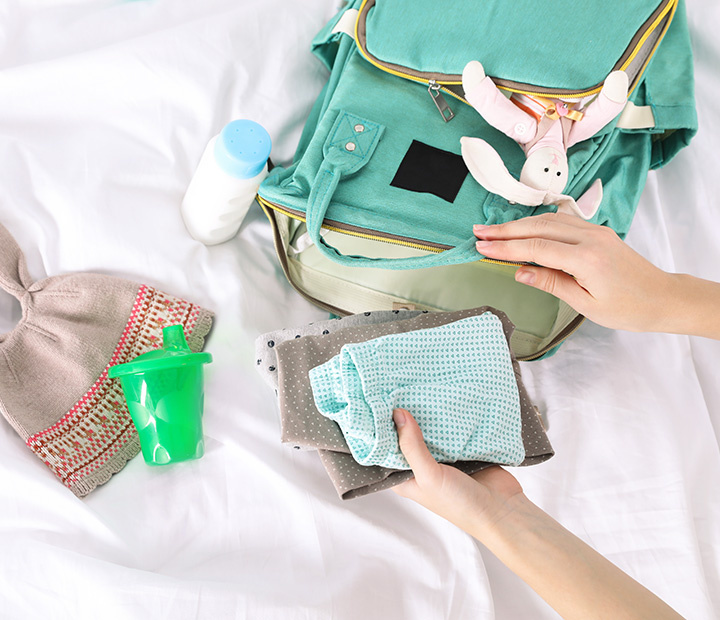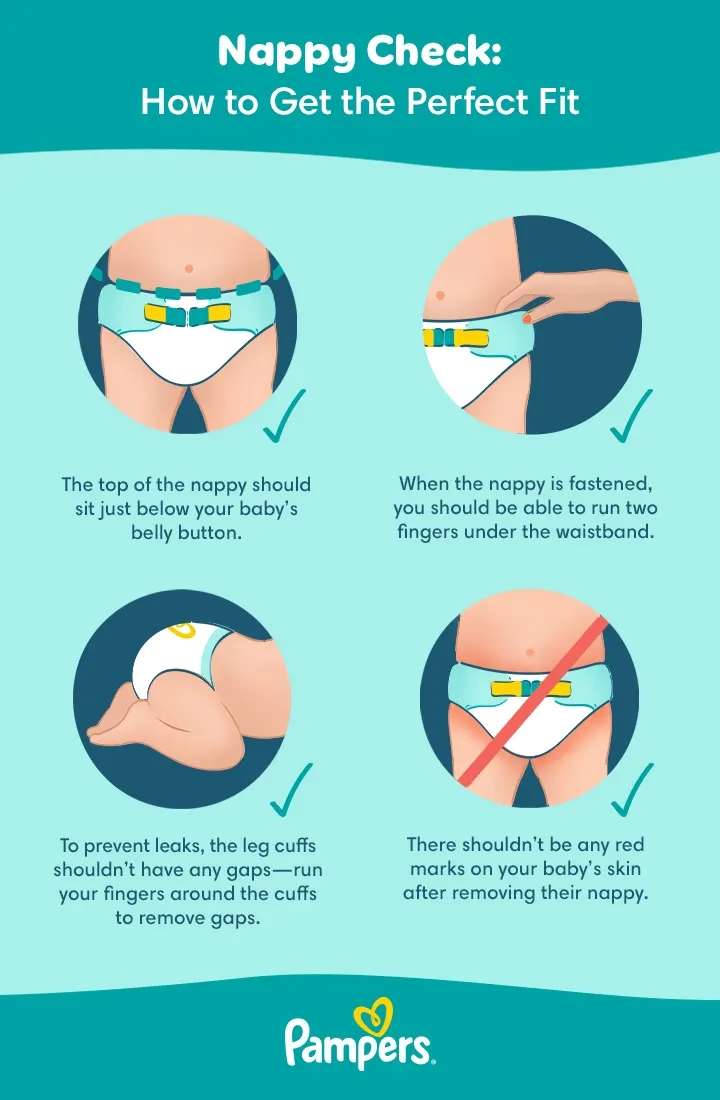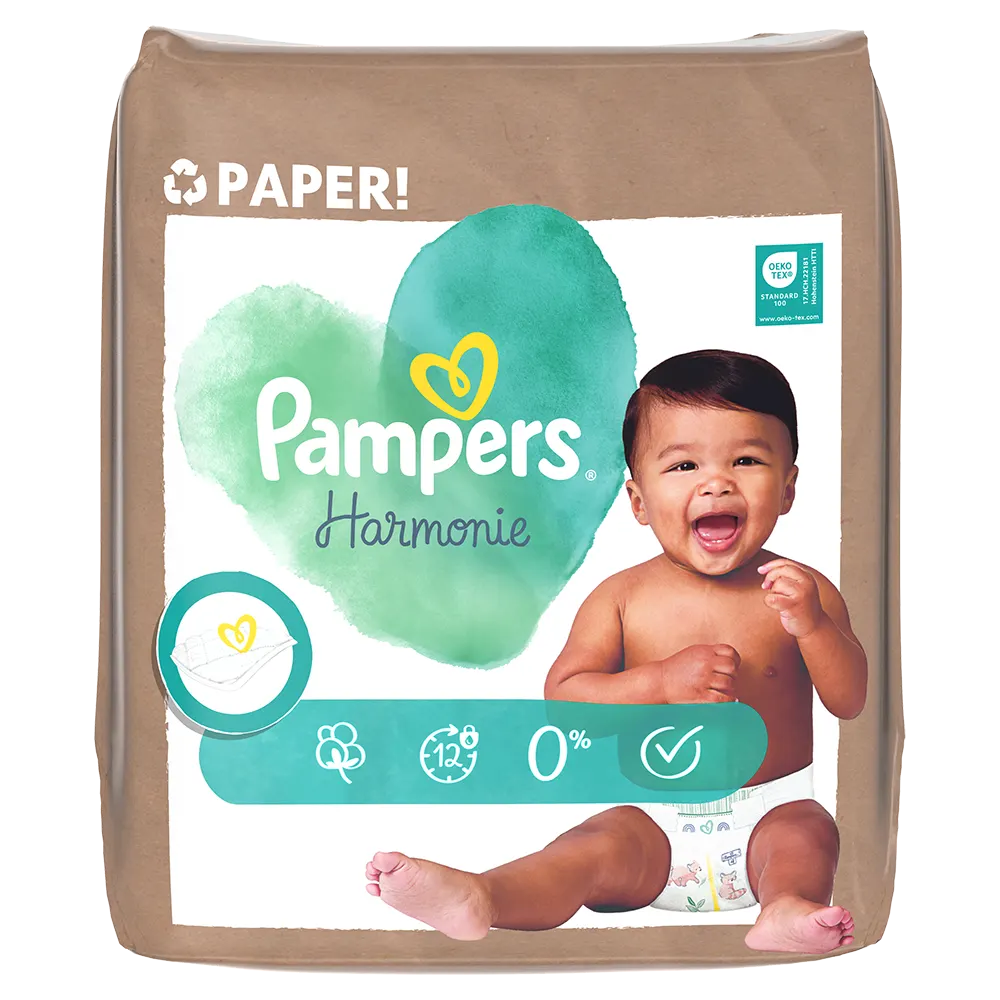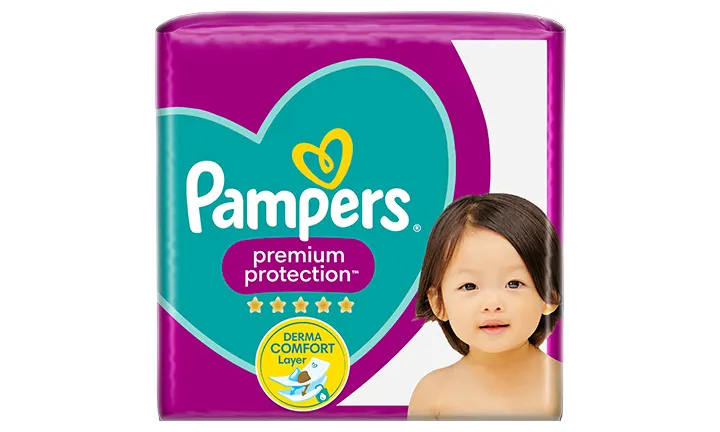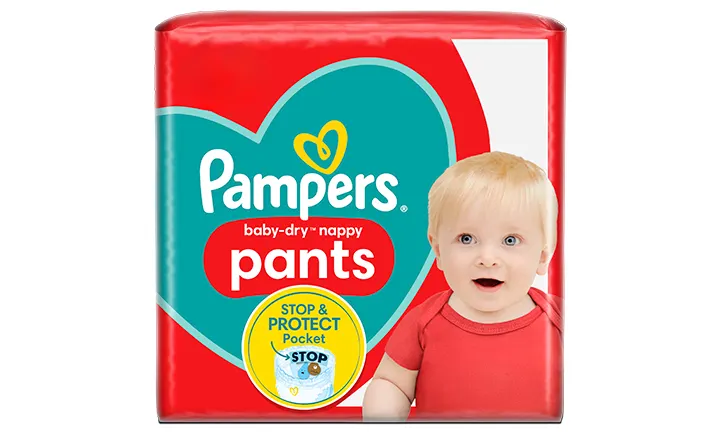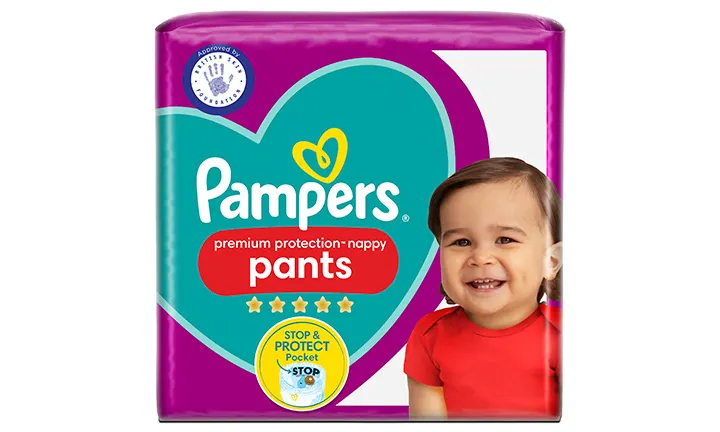
Pampers Nappy Size Guide and Chart
Wondering what size nappies to buy for your newborn or what nappy will fit your older baby’s ever-changing size? Check out our Pampers Nappy Size Guide below. It includes a helpful chart to determine the appropriate size, tips on checking if the nappy fits properly, and guidance on when to switch to a larger size. Additionally, you’ll find information on the best nappy size and type for your baby, along with tips to help prevent leaks and poonamis.
Pampers Nappy Size Guide
Understanding nappy sizes can simplify the decision-making process for parents. While many wonder which nappy size corresponds to their child's age, age is not the most reliable guide. After analysing hundreds of thousands of nappy-fit measurements, Pampers has concluded that weight is the most dependable factor to consider when selecting the appropriate nappy size.
As you explore the Pampers nappy size chart and guide below, remember that your newborn’s or older baby’s weight plays the most crucial role in determining the best fit.
To make things easier, we’ve also addressed the common question of whether you should buy a specific number of nappies in each size or not. Babies grow at their own pace, so it’s often best to wait and see before stocking up on a particular size. For general planning, we’ve included the average number of nappies a baby usually uses in each size on our chart.
Picking the Best Pampers Nappy Size by Weight
To help you decide which nappy and size is best for your baby at each stage of development, use our useful nappy size chart.
Our nappy sizing guide and chart lets you know the average number of nappies you can expect to use each day and what nappies are available in each size. It’s a great tool for planning or ordering ahead!
*Can vary by baby, age, and individual habits and practice
How to Use the Nappy Size Chart
Some weight ranges overlap, so it’s helpful to monitor your baby’s fit to know when to switch sizes. Keep reading to learn more about finding the perfect fit, when to size up in nappies, and which Pampers nappy is best for your baby’s needs. Plus, learn tips on how to prevent leaks and ‘poonamis’ to ensure a more pleasant and comfortable nappy experience.
Newborn Nappies
When caring for your newborn, choosing the right nappy is essential for keeping their delicate skin comfortable and dry. Pampers newborn nappy sizes include Size 0 (<3kg), Size 1 (2-5kg) and Size 2 (4-8kg), depending on your newborn’s weight. They’re designed with a navel-friendly shape to protect the umbilical cord stump, ultra soft materials, and instant absorption to protect skin and protect against leaks.
Newborns tend to go through a lot of nappies – often up to 10 per day – which means it's a good idea to have a healthy supply to hand.
As your baby grows, it’s important to monitor their weight to help you decide when to transition from a newborn nappy size to the next size up. Newborns often move quickly between the newborn sizes as they gain weight.
For more guidance on umbilical cord care or if you’re wondering how many newborn nappies you’ll need, you can read our articles to help you get started or prepare for your baby’s arrival.
When to Change Nappy Sizes
Beyond your baby reaching a weight that’s over what’s recommended for their current nappy size, here are some signs your baby might be ready for a different size nappy:
Making Sure the Nappy Fits Right
As you know, babies come in all sizes and shapes, so nappies fit slightly differently depending on the baby wearing them. To keep things simpler, Pampers nappy sizes are based on baby weight – not age or gender (check out our guide and chart for more insight).
Most of the time, your baby's weight will fall neatly within the range of a certain nappy size, producing a good fit. In some cases, you might have a choice of two sizes, as the weight ranges can sometimes overlap.
For example, if your baby weighs 4 or 5 kilograms a Pampers Size 2 nappy might be the ideal size, but if you have a baby who is long and slim you might need to stay with the smaller of the two possible sizes (Pampers Size 1) for the best fit.
Beyond checking to make sure the nappy is appropriate for your baby’s weight, there are four quick checks you can do to make sure your baby’s nappy fits properly:
The right fit ensures your baby stays dry and happy throughout the day.
Which Pampers Nappy Is Best for Your Baby?
As your baby grows, their nappy needs will change. This is why not all nappy types are available in every size. For instance, nappy types designed for more active babies, like nappy pants, typically start at Size 3 or Size 4, as babies tend to become more active as they grow.
Here are some things to consider when choosing which Pampers nappy to buy:
For Newborns
Newborns have very delicate skin, so they generally require extra softness and protection. Pampers newborn nappies are:
Consider Pampers® Premium Protection New Baby at this stage. It’s the only newborn nappy approved by the British Skin Foundation.
Another great option for newborns is Pampers Harmonie. They are made with a soft outer cover & absorbent topsheet, are hypoallergenic*, and gentle on your baby's skin. They contain 0% perfume, 0% lotion and guarantee up to 12 hours of Pampers dryness, for the quality reassurance every parent needs. * designed to minimise the risk of allergic reactions
If you’re wondering what size nappies to take to the hospital or birthing centre in your hospital bag, keep in mind that a newborn baby doesn’t necessarily need a Size 0 nappy. Depending on your baby’s birth weight, a larger size may be the best fit, so take a few of each of the smaller sizes of newborn nappies to try.
Growing Babies
Ensuring your baby feels dry and comfortable will be your biggest priority as they become more active.
For growing babies, choose a nappy that’s:
Pampers Premium Protection nappies could be an ideal choice for your growing baby, or you might enjoy the easy on-and-off feature of Pampers Baby-Dry nappy pants for your wriggly baby.
On-the-Go Babies
If your little one is starting to crawl, walk or just wriggles a lot during nappy changes, consider nappies that:
Pampers Baby-Dry Nappy Pants or Pampers Premium Protection Nappy Pants could suit your little acrobat perfectly at this stage of their development.
Why the Right Size Matters
When your little one wears the correct nappy size, good things happen! A properly fitting nappy not only keeps your baby dry and comfortable, but also helps prevent common nappy issues like leaks and ‘poonamis’.
Here’s what could happen if your little one isn’t wearing the correct nappy size:
How to Prevent Leaks and ‘Poonamis’
Do the following to help prevent nappy leaks and ‘poonamis’:
Get more tips on how to change a nappy and how often your little one needs changing in our informative guides.
FAQS AT A GLANCE
Pampers nappies and nappy pants range from Size 0 up to Size 9. Check out the nappy size guide and chart by weight included in our article to discover what sizes are available for each nappy type. As an example, Pampers Premium Protection nappies are available in the following sizes:
- Size 4: 9-14kg (20-31lbs)
- Size 5: 11-16kg (24-35lbs)
- Size 6: 13-18kg (29-40lbs)
- Size 7: 15+kg (33+lbs).
The Bottom Line
Once you find the best size nappy for your little one using our Pampers nappy size guide and chart for newborns and older babies, choosing the right nappy and nappy pants will be a breeze.
With a snug-fitting nappy, your baby or toddler will be comfier, experience fewer leaks and possible ‘poonamis’, and you’ll be able to relax in the knowledge that your baby’s skin is getting all the protection it needs.
If you want to track your baby’s growth, you might enjoy our Baby Growth Chart Calculator tool.
If you haven’t already, download the Pampers Club app, which offers discounts and rewards on all your favourite Pampers products – helping you to care for your little one’s nappy area.
How We Wrote This Article The information in this article is based on expert advice found in trusted medical and government sources, such as the National Health Service (NHS). You can find a full list of sources used for this article below. The content on this page should not replace professional medical advice. Always consult medical professionals for full diagnosis and treatment.
Read more about Safety and Commitment
Related Articles
Join Pampers Club and get:


